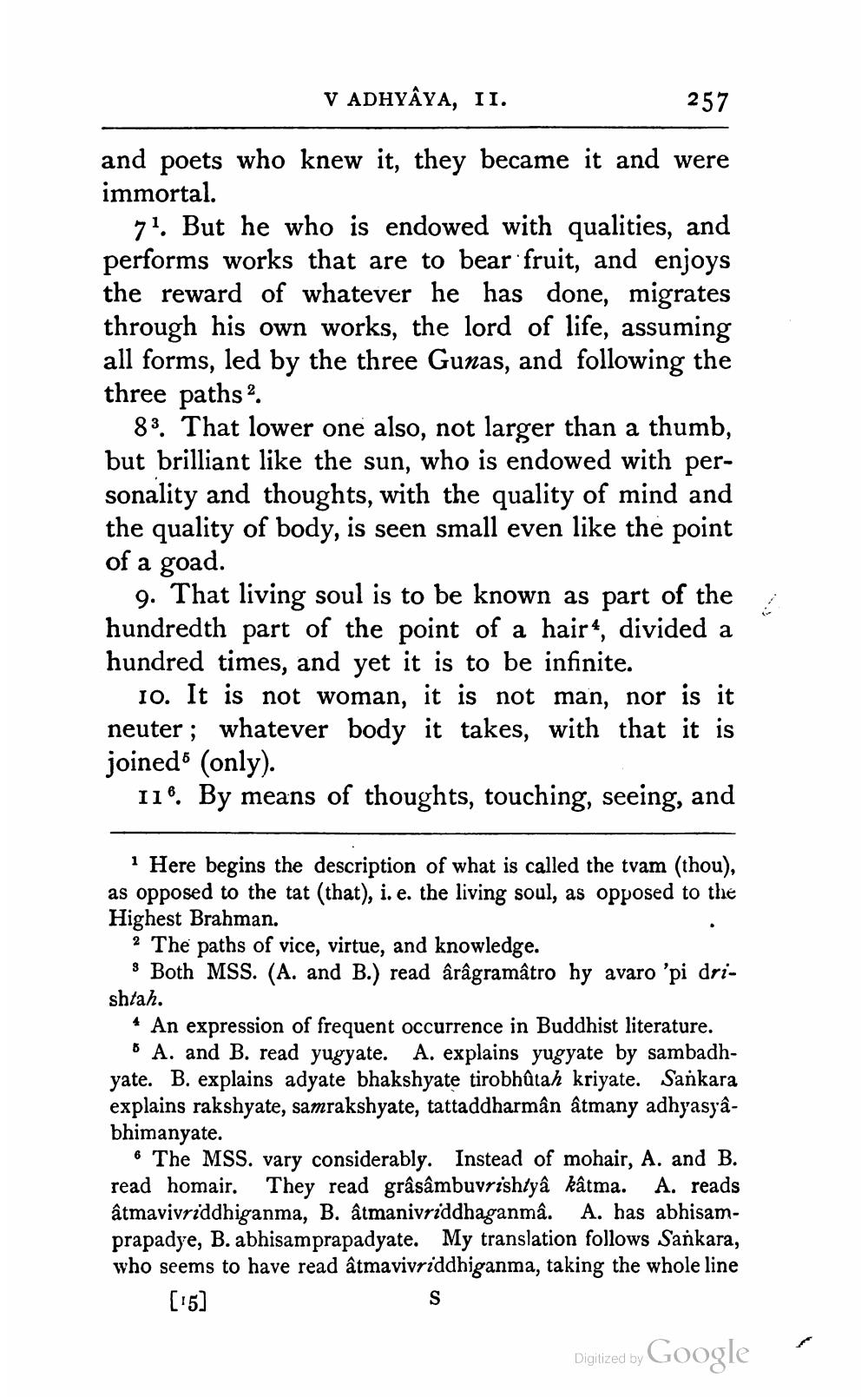________________
V ADHYAYA, II.
257
and poets who knew it, they became it and were immortal.
71. But he who is endowed with qualities, and performs works that are to bear fruit, and enjoys the reward of whatever he has done, migrates through his own works, the lord of life, assuming all forms, led by the three Gunas, and following the three paths2.
83. That lower one also, not larger than a thumb, but brilliant like the sun, who is endowed with personality and thoughts, with the quality of mind and the quality of body, is seen small even like the point of a goad.
9. That living soul is to be known as part of the hundredth part of the point of a hair, divided a hundred times, and yet it is to be infinite.
10. It is not woman, it is not man, nor is it neuter; whatever body it takes, with that it is joined (only).
11. By means of thoughts, touching, seeing, and
1 Here begins the description of what is called the tvam (thou), as opposed to the tat (that), i. e. the living soul, as opposed to the Highest Brahman.
2 The paths of vice, virtue, and knowledge.
Both MSS. (A. and B.) read ârâgramâtro hy avaro 'pi dri
shtah.
* An expression of frequent occurrence in Buddhist literature. A. and B. read yugyate. A. explains yugyate by sambadhyate. B. explains adyate bhakshyate tirobhûtah kriyate. Sankara explains rakshyate, samrakshyate, tattaddharmân âtmany adhyasyâbhimanyate.
The MSS. vary considerably. Instead of mohair, A. and B. read homair. They read grâsâmbuvrishtyâ kâtma. A. reads âtmavivriddhiganma, B. âtmanivriddhaganmâ. A. has abhisamprapadye, B. abhisamprapadyate. My translation follows Sankara, who seems to have read âtmavivriddhiganma, taking the whole line S
[15]
Digitized by
Google
7




